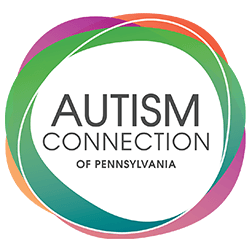Summary
Guest Blog Post by Jennifer LaRocco, Editor & Coordinator at Cerebral Palsy Guidance: Jennifer is an adult living with quadriplegic cerebral palsy and has insight into what living with cerebral palsy is like from childhood to adulthood. She advocates for and supports others with disabilities, especially those with cerebral palsy, through public outreach and social media.
April is a time when we come together to recognize the diverse experiences of people living with autism spectrum disorder (ASD) and their families, and we encourage the momentum to continue throughout the year. Autism is a complex neurodevelopmental condition that affects how a person communicates, interacts with others, and experiences the world around them. As we delve into the intricacies of autism, it’s essential to understand its relationship with other conditions, such as cerebral palsy.
The Intersection of Autism and Cerebral Palsy
Cerebral palsy (CP) is a group of neurological disorders that affect movement, posture, and muscle coordination. While CP primarily impacts motor function, it can also co-occur with other developmental conditions, including autism. Research suggests that approximately 6% to 15% of individuals with CP also have a diagnosis of autism, highlighting the overlapping nature of these conditions.
The co-occurrence of autism and cerebral palsy presents unique challenges for each person and their families. Understanding the relationship between these conditions is crucial for providing comprehensive care and support. While the exact mechanisms underlying their co-occurrence are not fully understood, a couple factors may contribute to their association:
Common Risk Factors – Both autism and cerebral palsy have shared risk factors, including genetic predisposition, prenatal complications, and environmental influences.
Neurological Differences – Research suggests that disruptions in brain development may contribute to the development of both conditions. Structural and functional abnormalities in the brain can manifest as diverse symptoms associated with autism and cerebral palsy.
Navigating Dual Diagnoses
Receiving dual diagnoses of autism and cerebral palsy can be overwhelming for individuals and their families. It’s essential to access comprehensive support services and resources to address the unique needs associated with each condition. Here are some steps to navigate this journey:
- Seek Multidisciplinary Care — Collaborate with a team of healthcare professionals, including pediatricians, neurologists, developmental specialists, and therapists, to develop a personalized treatment plan tailored to your child’s needs.
- Access Early Intervention Services — Early intervention is critical for optimizing outcomes for children with autism and cerebral palsy. Explore early intervention programs that offer therapeutic interventions, educational support, and family-centered services.
- Connect with Support Networks — Joining support groups and connecting with other families facing similar challenges can provide invaluable emotional support, practical advice, and shared experiences. Organizations like Autism Connection of PA offer resources and community networks.
Autism Connection of Pennsylvania thanks Jennifer LaRocco, Editor & Coordinator at Cerebral Palsy Guidance, for sharing her expertise through this insightful guest blog post. Jennifer’s contribution sheds light on the intricate relationship between autism spectrum disorder and cerebral palsy. As we commemorate April’s focus on autism, let’s keep the momentum going throughout the year. Thank you, Jennifer, for your dedication to raising awareness and fostering understanding in our community.
Please visit Jennifer’s page on the Cerebral Palsy Guidance website to learn more.

